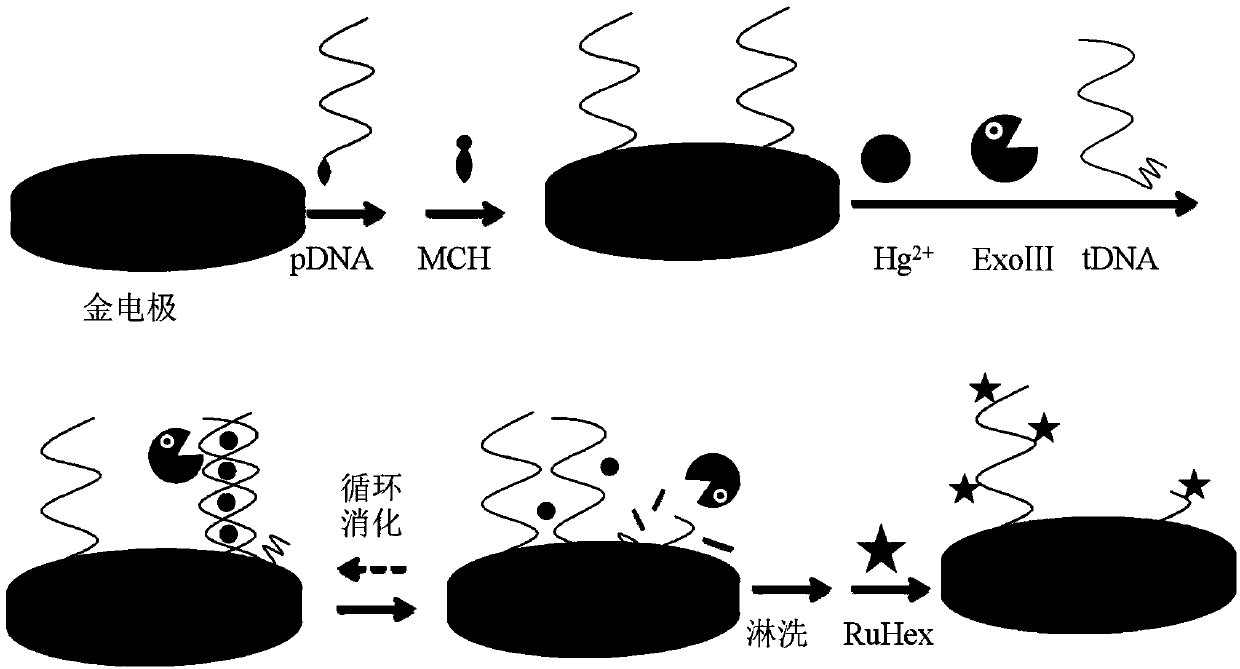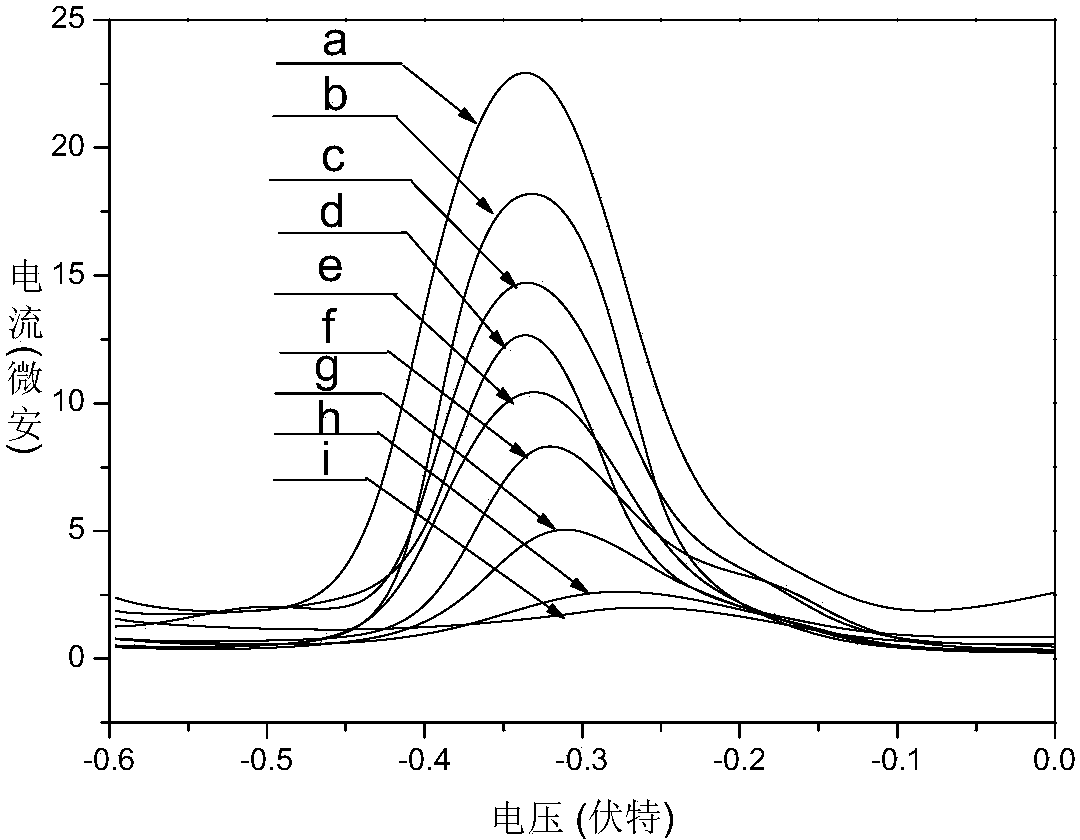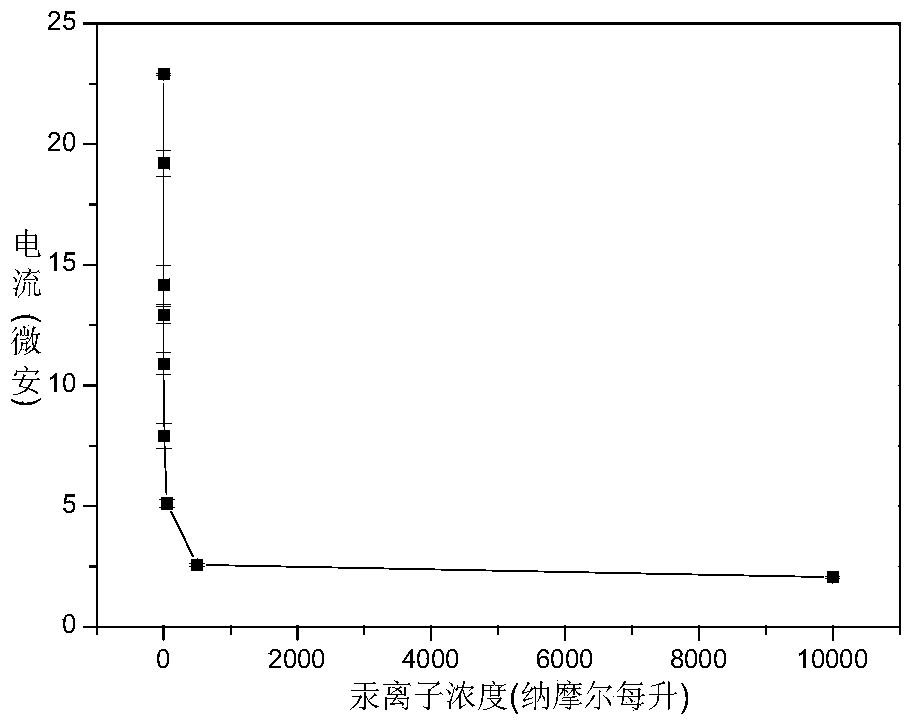Enzyme based electrochemical biosensing method applied to detection of trace mercury ions
A biosensing and mercury ion technology, applied in the field of environmental analysis, achieves the effects of high sensitivity, high selectivity, and simple operation
- Summary
- Abstract
- Description
- Claims
- Application Information
AI Technical Summary
Problems solved by technology
Method used
Image
Examples
Embodiment 1
[0029] Embodiment 1: An enzyme-based electrochemical biosensing method for trace mercury ion detection, such as figure 1 shown, including the following steps:
[0030] (1) Grind the gold electrode with a diameter of 2 mm in the suspension of alumina polishing powder with a particle size of 1 μm, 0.3 μm and 0.05 μm for 5-10 minutes successively, and clean it ultrasonically with ethanol and high-purity water for 5 minutes after each grinding, After the electrode is dry, immerse it in the mixed solution of newly prepared concentrated sulfuric acid and 30% hydrogen peroxide (volume ratio 3:1) for 30 minutes, then wash it with high-purity water, and immerse it in 0.5M H 2 SO 4 solution, carry out cyclic voltammetry scanning until the scanning curve is stable, and finally wash with high-purity water and use N 2 blow dry.
[0031] (2) Add 10 μL of probe DNA (pDNA) incubation buffer containing 1 μM to the surface of the cleaned gold electrode, incubate it at 4°C for 24 hours, and for...
Embodiment 2
[0036] Embodiment 2: a kind of enzyme-based electrochemical biosensing method for trace mercury ion detection, such as figure 1 shown, including the following steps:
[0037] (1) Grind the gold electrode with a diameter of 2 mm in the suspension of alumina polishing powder with a particle size of 1 μm, 0.3 μm and 0.05 μm for 5-10 minutes successively, and clean it ultrasonically with ethanol and high-purity water for 5 minutes after each grinding, After the electrode is dry, immerse it in the mixed solution of newly prepared concentrated sulfuric acid and 30% hydrogen peroxide (volume ratio 3:1) for 30 minutes, then wash it with high-purity water, and immerse it in 0.5M H 2 SO 4 solution, carry out cyclic voltammetry scanning until the scanning curve is stable, and finally wash with high-purity water and use N 2 blow dry.
[0038] (2) Add 10 μL of probe DNA (pDNA) incubation buffer containing 1 μM dropwise onto the cleaned gold electrode surface, incubate it at 4 °C for 24 ...
PUM
| Property | Measurement | Unit |
|---|---|---|
| particle diameter | aaaaa | aaaaa |
Abstract
Description
Claims
Application Information
 Login to View More
Login to View More - R&D
- Intellectual Property
- Life Sciences
- Materials
- Tech Scout
- Unparalleled Data Quality
- Higher Quality Content
- 60% Fewer Hallucinations
Browse by: Latest US Patents, China's latest patents, Technical Efficacy Thesaurus, Application Domain, Technology Topic, Popular Technical Reports.
© 2025 PatSnap. All rights reserved.Legal|Privacy policy|Modern Slavery Act Transparency Statement|Sitemap|About US| Contact US: help@patsnap.com



